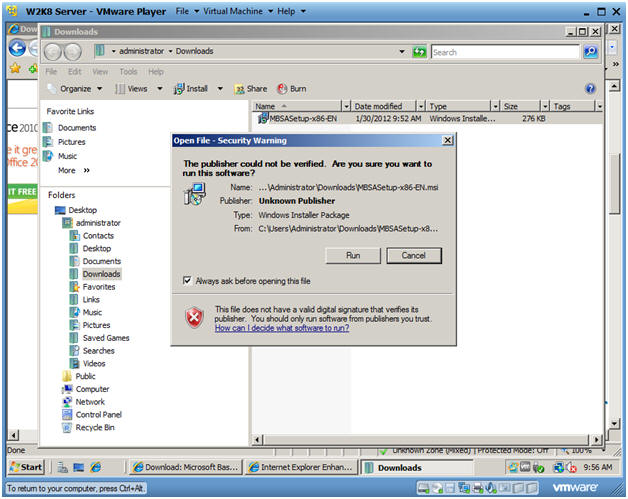

Note that it usually takes some minutes until schema changes are active. This sets bit 9 of the searchFlags property which will disable auditing of the Given-Name attribute of all user objects in the domain. Given-Name, and change searchFlags to 256. After you added the snap-in to the MMC, right click on ADSI Edit and select "Connect to". It is also possible to only disable auditing of certain attributes by editing the Schema with the ADSI Edit snap-in.
Windows server 2008 security analyzer free#
Otherwise, you won't see the Security tab. The Microsoft Baseline Security Analyzer ( MBSA) is an excellent free tool that can be used to provide a detailed assessment of the security configuration of your Windows Server 2008 R2 host. Make sure that "Advanced Features" under "View" is enabled in the snap-in. For instance, if you want to disable auditing for all objects in a certain container, you have to right click on it in the Active Directory Users and Computers snap-in, navigate to Properties\Security\Advanced\Auditing and remove the entries there. Like in former Windows versions, you still can control which objects are audited by modifying its SACL (System Access Control List). There might be certain circumstances where it makes sense to disable this feature, for example, when you modify many Active Directory objects with a script. To view the current setting you have to type: auditpol /get /subcategory:"directory service changes". If you want to disable the new Directory Service Changes policy you can do it with this command: auditpol /set /subcategory:"directory service changes" /success:disable. You can find the global audit policy under Windows Settings\Security Settings\Local Policies\Audit Policy\ in GPedit.msc. However, if you enable the Audit Directory Service Access global audit policy with GPedit.msc all new policies are enabled too, by default. You've to do this on the command prompt! Were Microsoft's programmers too lazy to add these new policies to GPedit.msc? It is a bit strange in my view that you can't enable, disable or view the new policies with the Group Policy Editor. If an object is moved, the new and the old location will appear in the security log and if an object is undeleted, its new location is logged, too. If you create a new object, then all attributes of this object are logged.
Windows server 2008 security analyzer windows 7#
If you enable it, then the security log will also store the values of modified attributes. NET Framework 4.7.1 on Windows 7 SP1 and Windows Server 2008 R2 SP1 (KB4074906) Windows 7,Windows Server 2008 R2. The second one introduces the feature mentioned above.

BPA reports best practice violations to the administrator after BPA scans the roles that are. Please remember to mark the replies as answers if they help and un-mark them if they provide no help.Win2k/Win2k3 has only one audit policy (Audit Directory Service Access) now there are four different policies available: Directory Service Access, Directory Service Changes, Directory Service Replication, and Detailed Directory Service Replication. Best Practices Analyzer (BPA) is a server management tool that is available in Windows Server 2008 R2. If you have feedback for TechNet Subscriber Support, contact Rayden, Please remember to mark the replies as answers if they help and un-mark them if they provide no help. Share permission got only SID and not user friendly name Unknown User Reference on Folder Security Troubleshooting SID translation failures from the obvious to the not so obvious According to KB 254435, one possibility for this reason is that. Actually, my TFS is hosted on Windows 2008 and the power tool work on it perfectly. It is possible that the server that hosts the resource on which you found the SIDs is not able to locate your domain.įor more information, please also refer to the following links: Installing TFS Power Tool on Windows 2008 should be supported. Have you checked to see if the server can communicate with your DC? If it is not a DC, it seems to be caused by network connectivity.

Is the Windows Server 2008 R2 a domain controller? Does this happen to all the users?


 0 kommentar(er)
0 kommentar(er)
